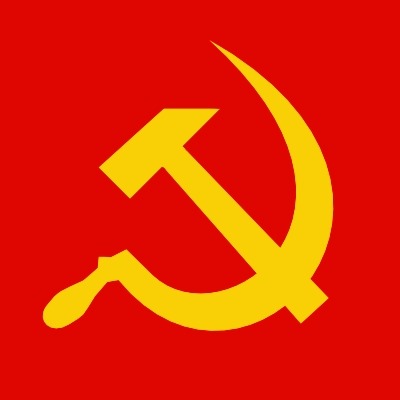 Communism is, according to Dictionary.com, “a system of social organization in which all economic & social activity is controlled by a totalitarian state dominated by a singe & self-perpetuation political party.”
Communism is, according to Dictionary.com, “a system of social organization in which all economic & social activity is controlled by a totalitarian state dominated by a singe & self-perpetuation political party.”The idea of collectivism has been traced back to antiquity. Many relate back to the mention of such practices in Plato’s The Republic, Spartacus’s uprising against Rome, Thomas More’s Utopia, & some even consider the Sermon on the Mount to be referring to a collective society. However, Communism’s true birth occurred after the French Revolution. During this time in history, the terms “Communism” & “Socialism” were used interchangeably.
Manifesto of the Communist Party (1848) by Karl Marx & Friedrich Engles “firmly tied communism with the idea of working class revolution conducted by the exploited proletariat (or the working class).” (Wikipedia)
“Marx posited that communism would be the final stage in human society, which would be achieved after an intermediate stage called socialism, & through the temporary & revolutionary dictatorship of the proletariat. Communism in the Marxist sense refers to a classless, stateless, & oppression-free society where decisions on what to produce & what policies to pursue are made directly & democratically.” (Wikipedia)
“Most influential leftist & socially critical theories either develop Marxism further, (e.g., social democracy, Leninism, Maoism, & Trotskyism), or completely drop Marxist ideology and do not set the creation of classless society as their aim (e.g., the modern feminism, New Labour, environmentalism). Therefore the words Marxism & communism are usually understood as synonymous.” (Wikipedia)
Lenin led the Bolsheviks in taking over Russia from the Czars after WWI leading to the founding of the Soviet Union in 1922. Stalin took Lenin’s place in 1924 after he died from a stroke despite his warnings against Stalin. “Once in power, Stalin carried out multiple purges of dissidents & left communists/opposition, particularly of those around Leon Trotsky, & established the character of Communism as the totalitarian ideology it is most commonly known as & referred to today.” (Wikipedia)
After WWII, Communist regimes started sprouting up all over Central & Eastern Europe & China. After the Cold War & several events that exhibited the people’s unhappiness with the Communist ideal, most of the European Communist governments suffered utter collapse in 1989 with the Soviet Union following suit two years later.
Communism is still alive & well today. “By the beginning of the 21st century, states controlled by Communist parties under a single-party system include the People’s Republic of China, Cuba, Laos, North Korea, & Vietnam.” (Wikipedia) Several countries including the Republic of Moldova & Cyprus have leaders who belong to Communist parties. South Africa, India, & Nepal all have very active Communist parties &/or politicians. The Socialist Workers Party(SWP) in Britain, the International Socialist Organization (ISO) in the US, & the New Anticapitalist Party in France all continue to grow in adherents.
In the map below, "The Red states represent Communist governments aligned with the Soviet Union. The Yellow states represents Communist governments aligned with the People's Republic of China (besides China itself, there were only three: the Socialist People's Republic of Albania, Democratic Kampuchea, and the Somali Democratic Republic). The Black states (North Korea and the Socialist Federal Republic of Yugoslavia) represent the Communist governments that were not aligned with either."

No comments:
Post a Comment